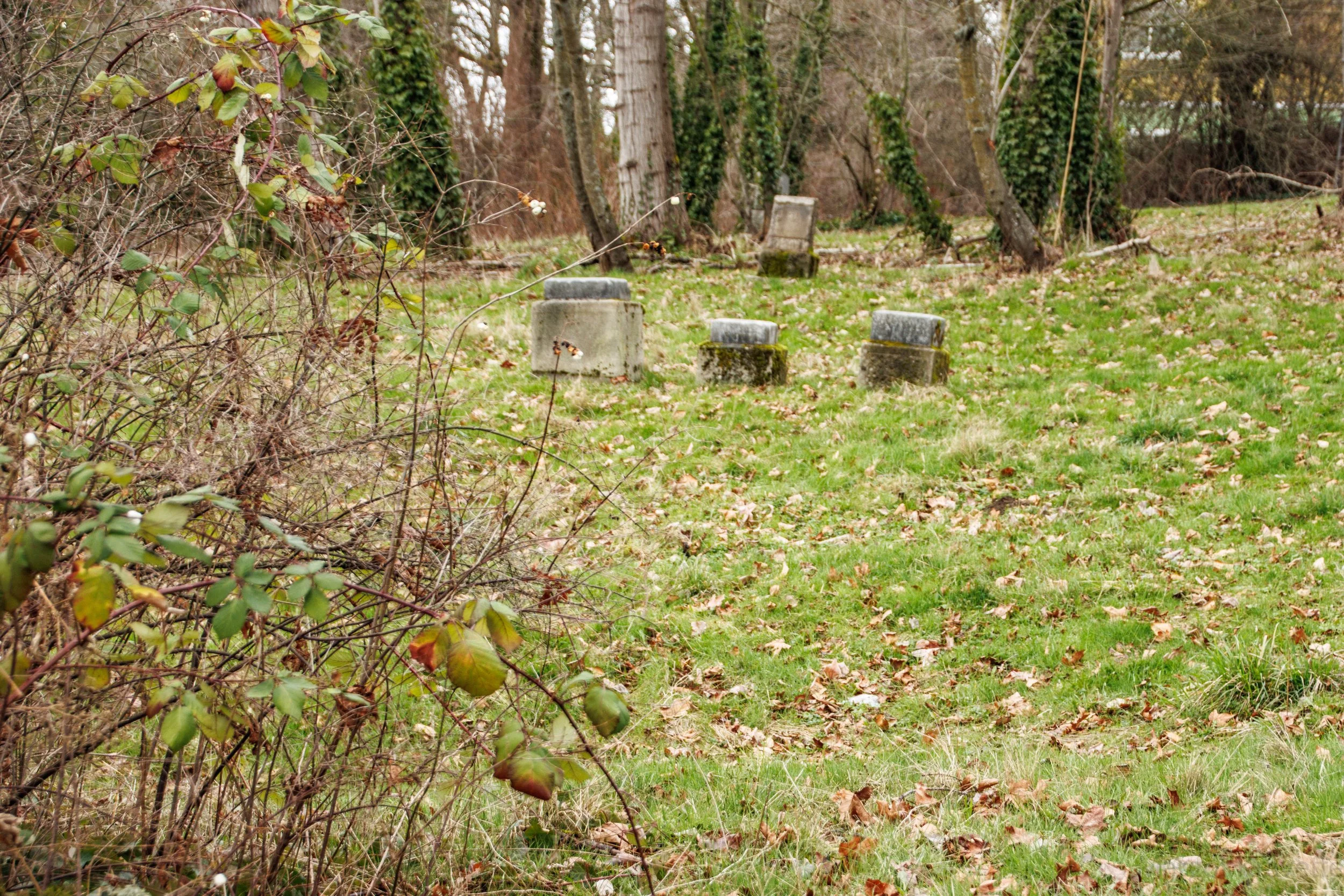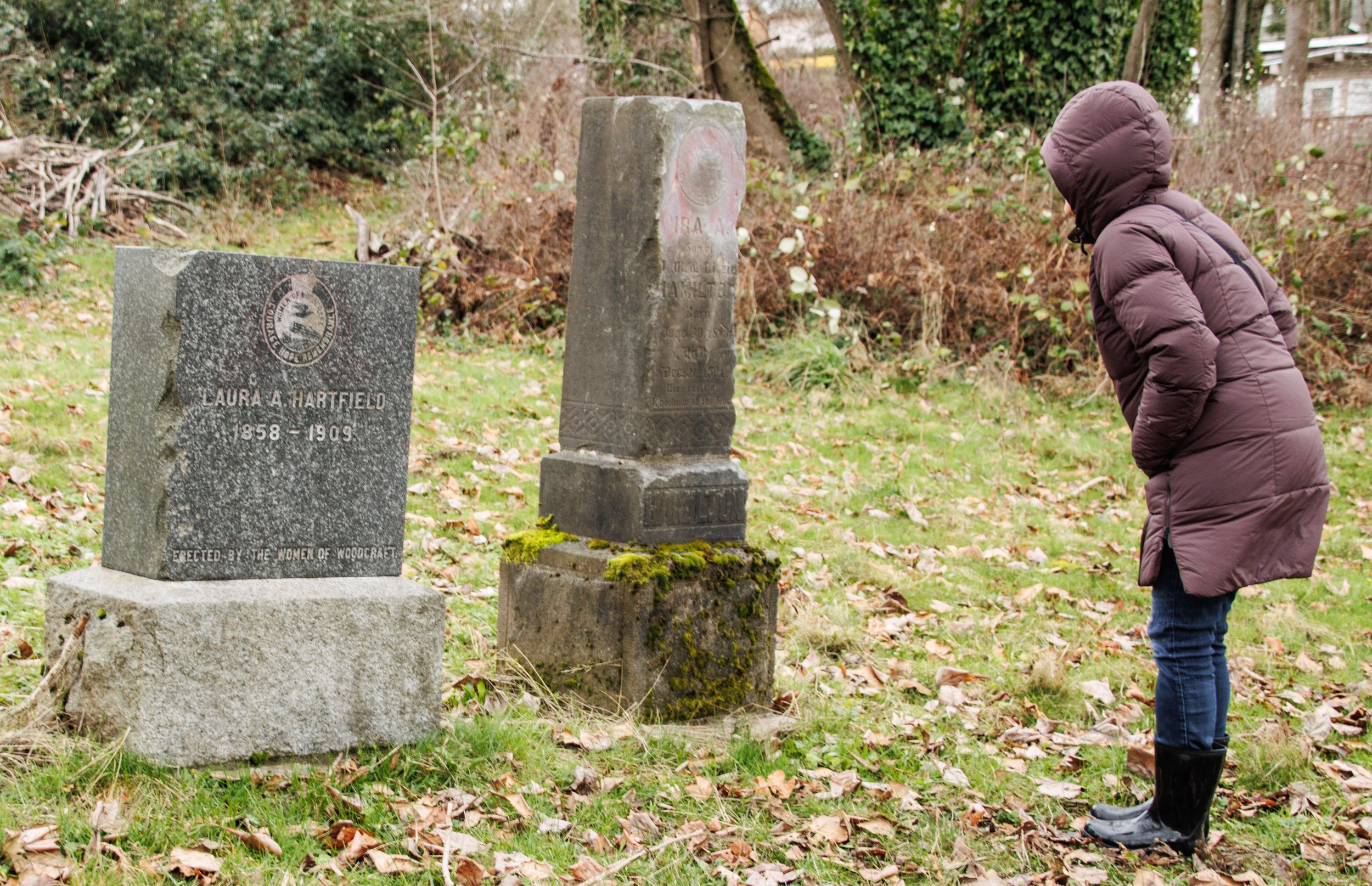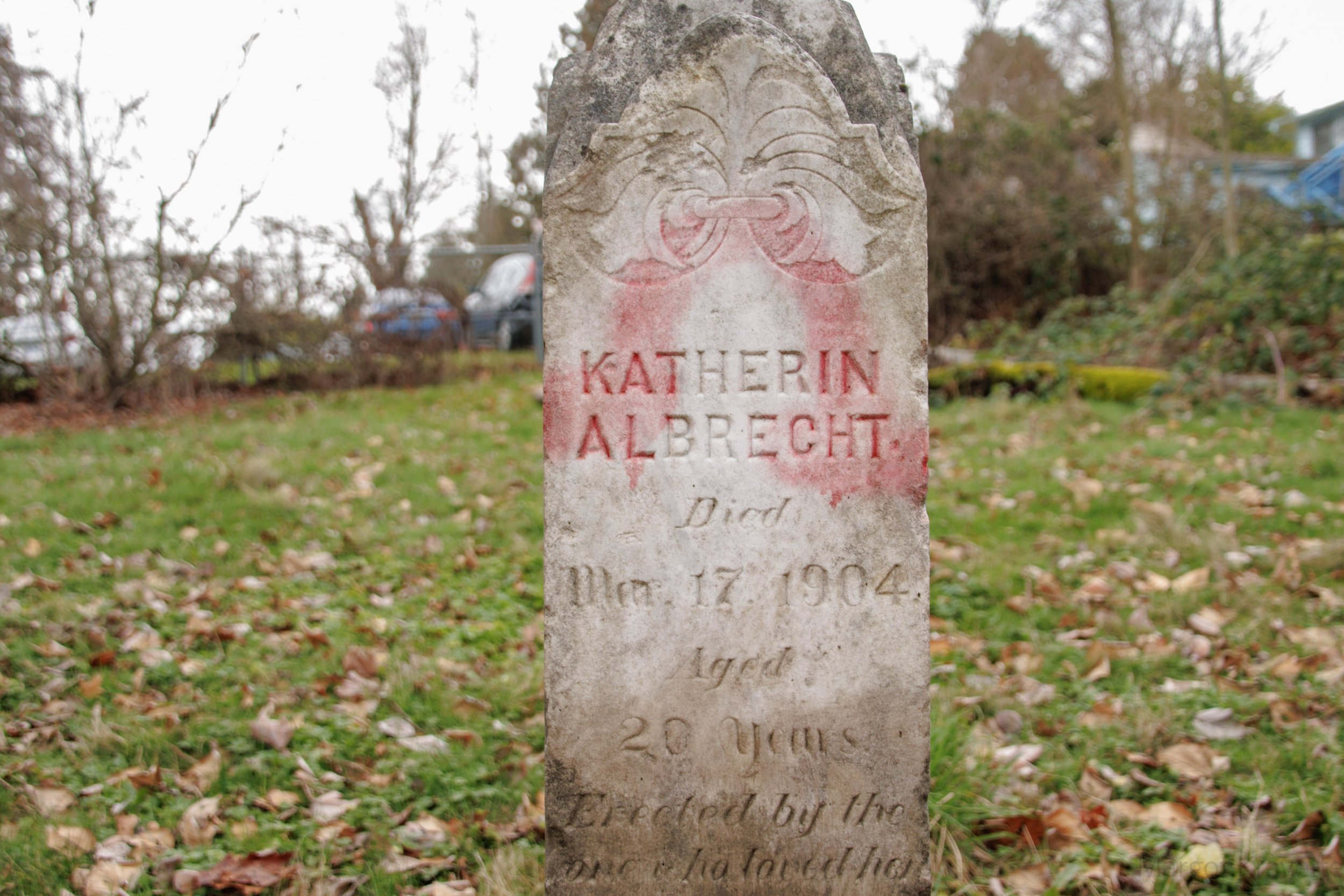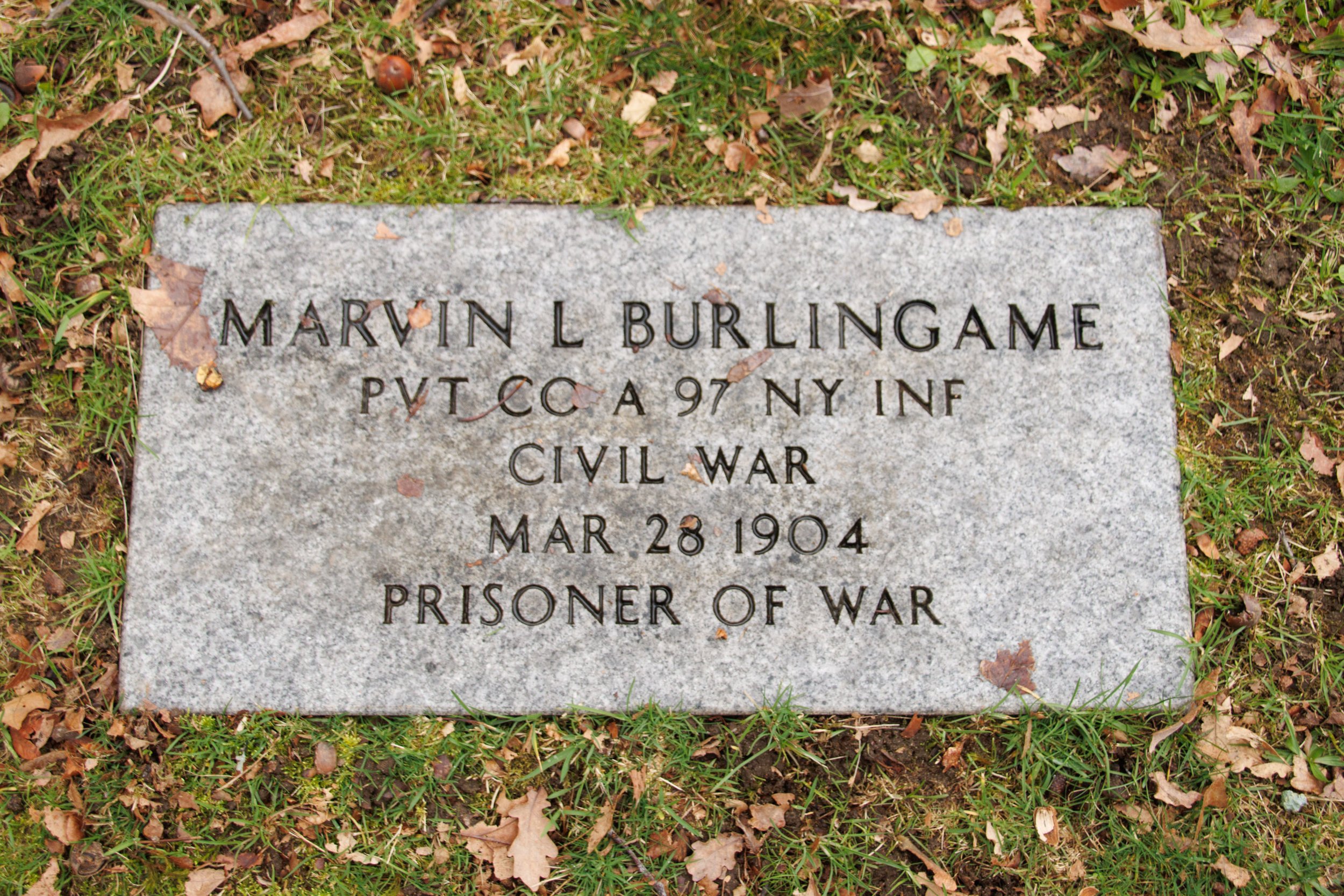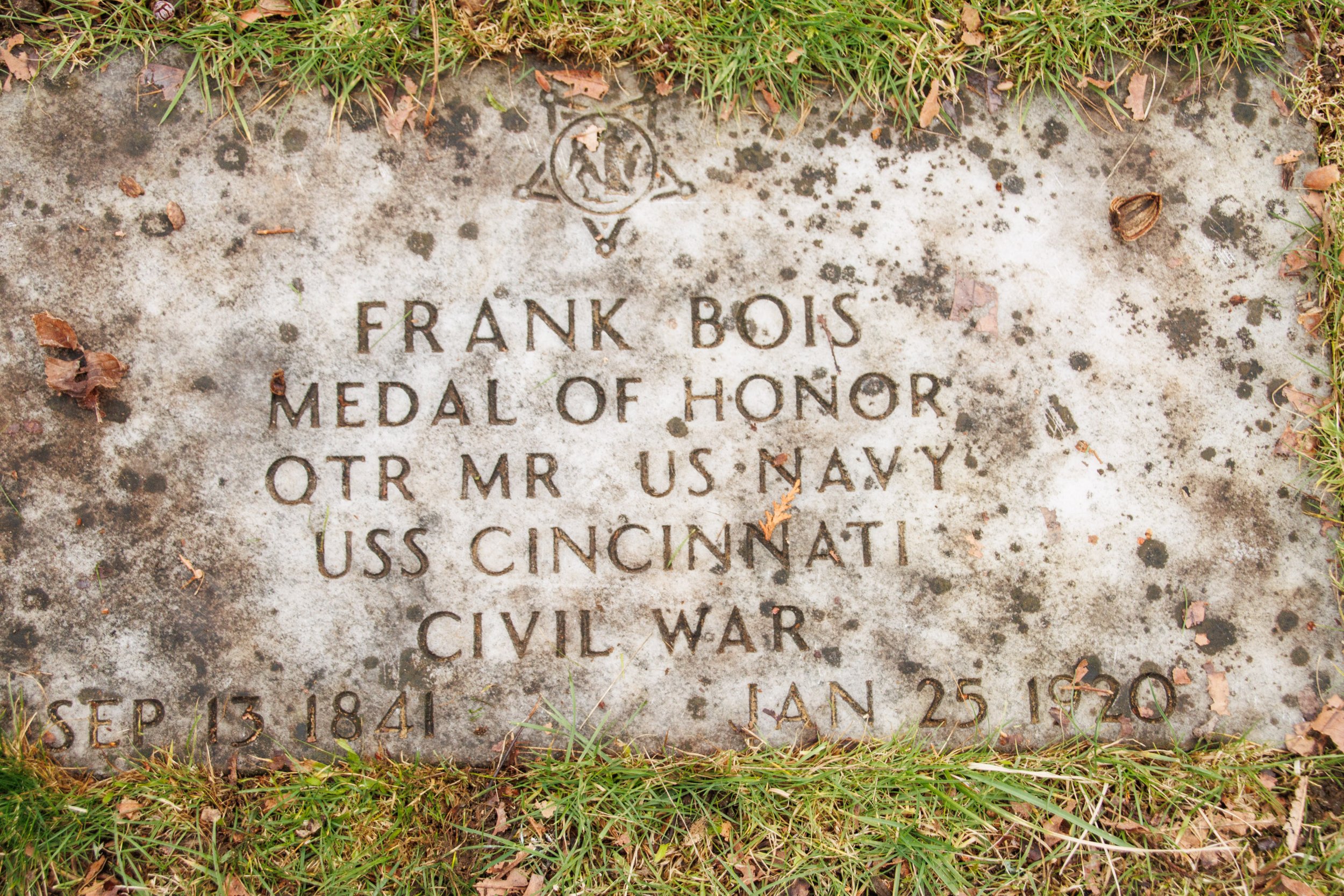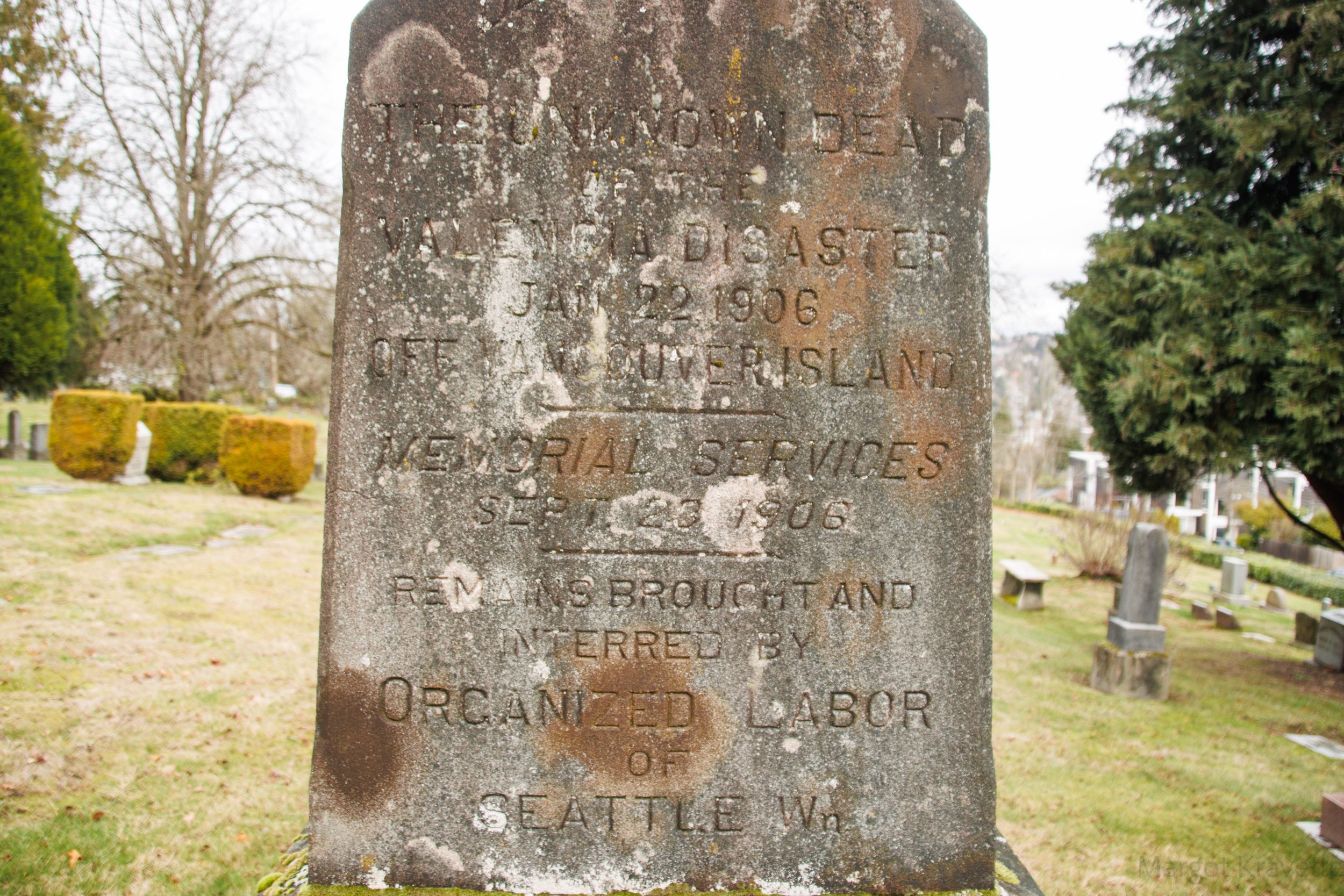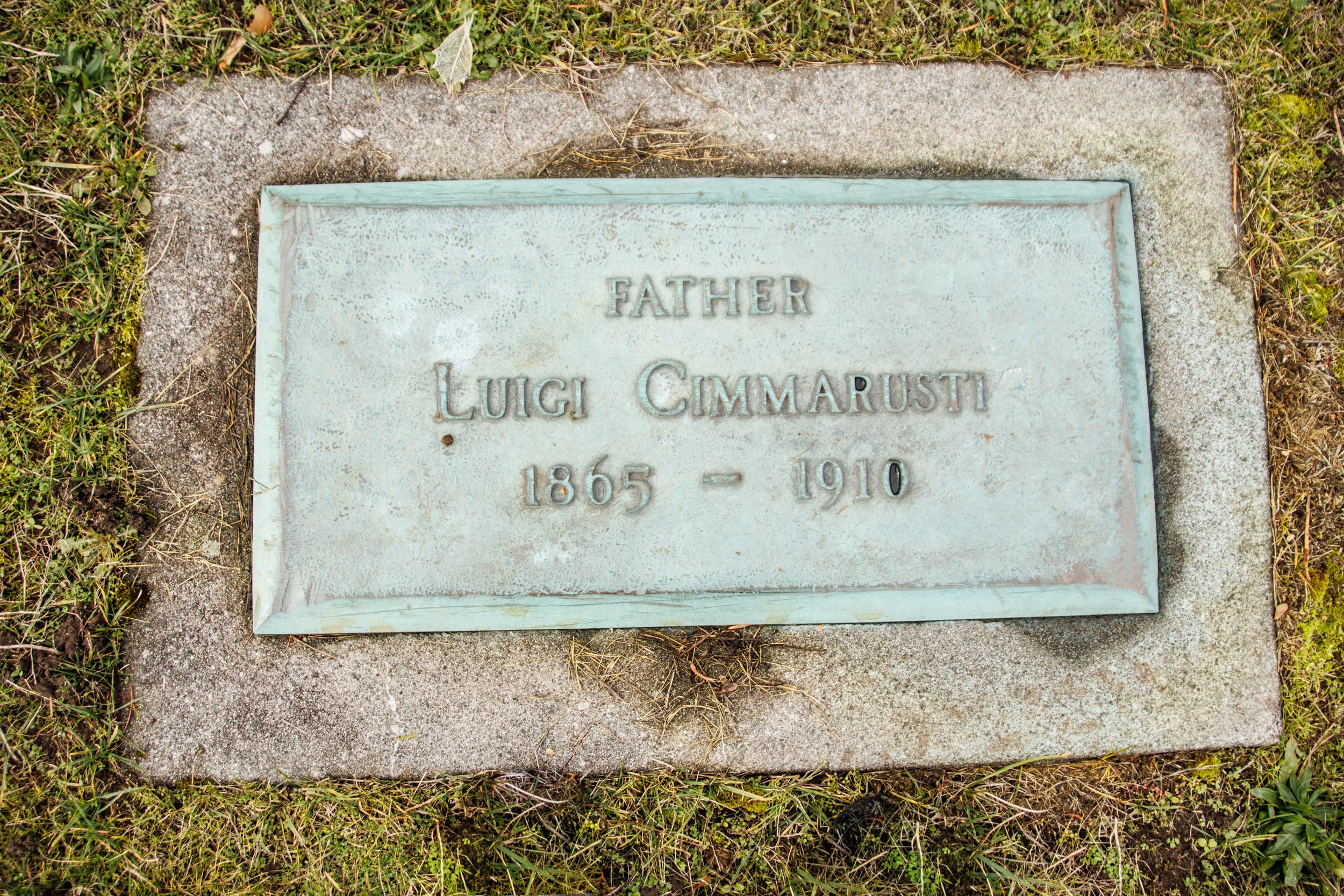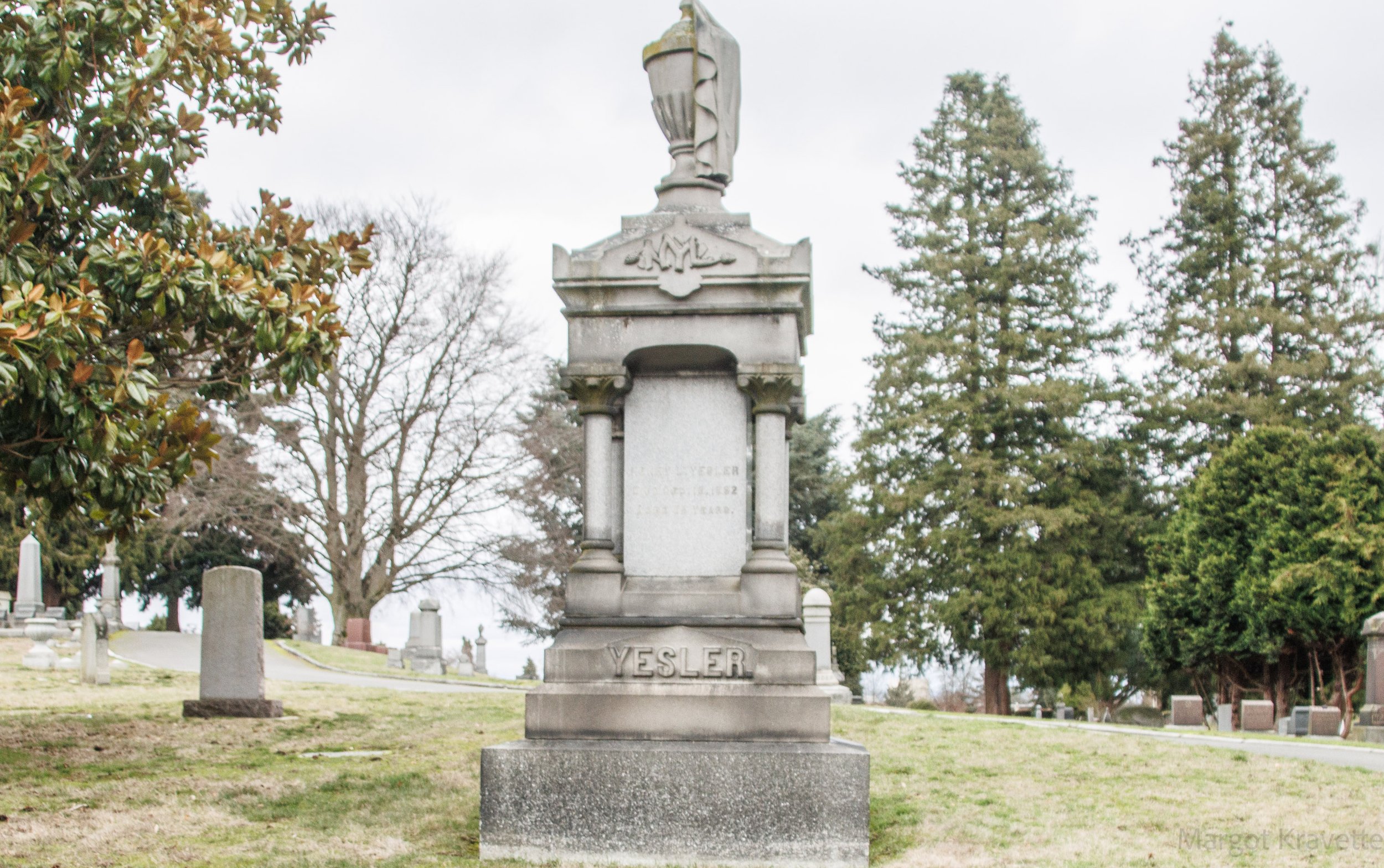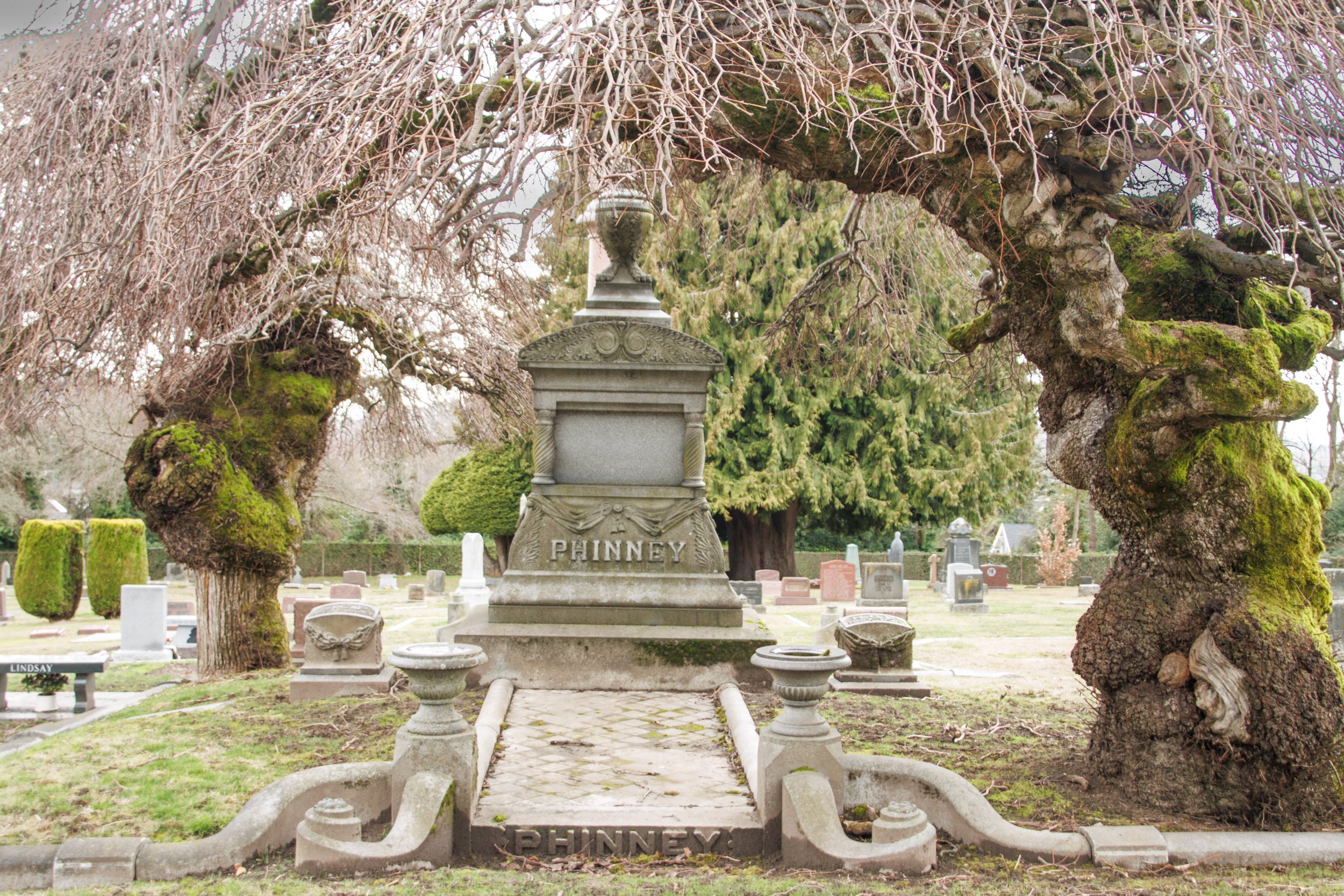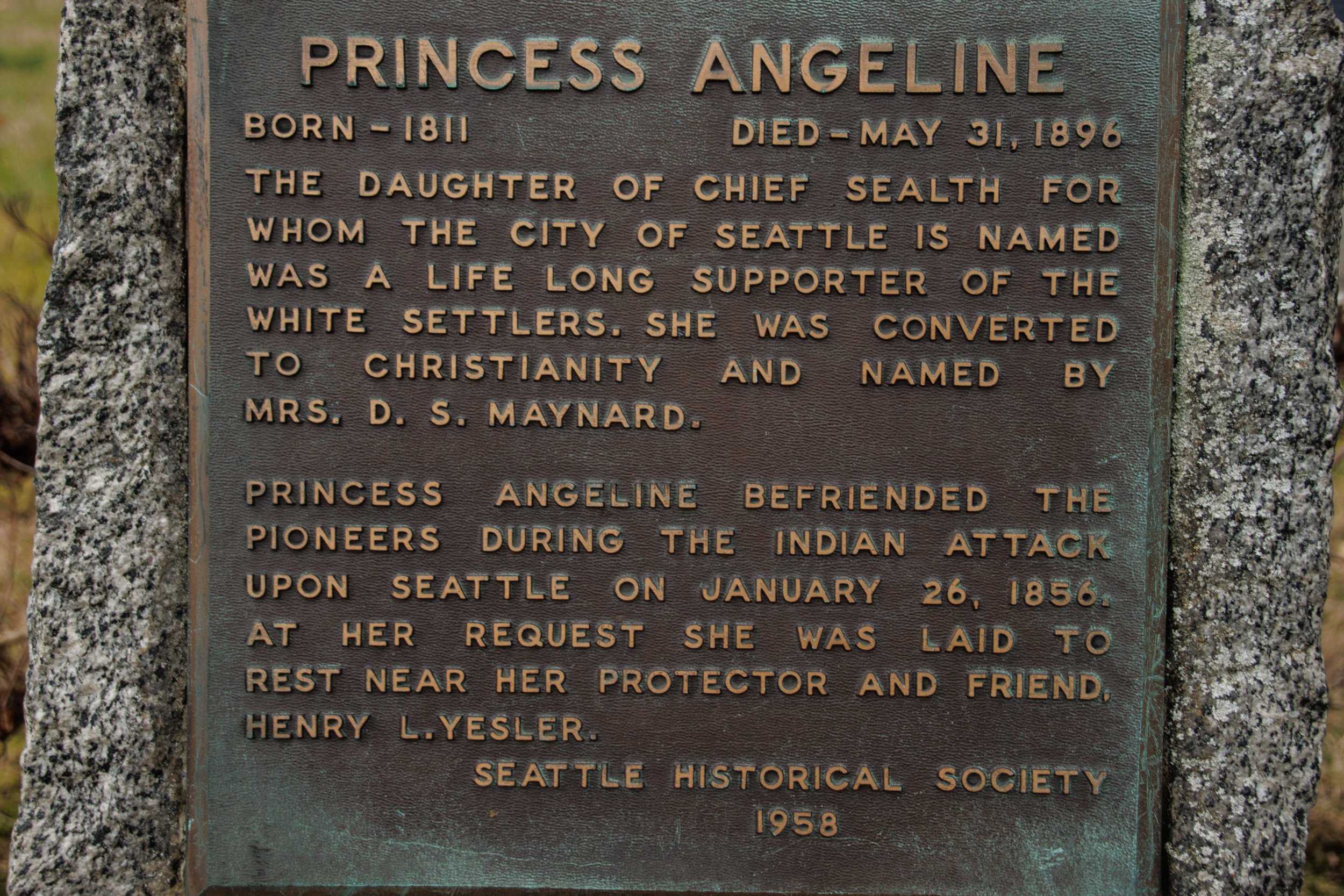Seattle’s Historic Cemeteries
Probably the greatest benefit I have had in creating Inspired Journeys is the vast amount of new knowledge I learn each time I research a location or a topic. The research for Seattle’s Historic Cemeteries has exposed information about Seattle and our country about which I was unaware; most of it making me proud and some disappointed.
The First White Cemetery
The first white cemetery in Seattle, called the Denny Hotel Cemetery, was at the corner of what is now Stewart Street and Second Avenue, where the Moore Theater and the Josephinium Residence now stand. The first burial there was in 1853 and the last in 1860. About 20 bodies were originally buried there but most were moved to what was then known as the City Cemetery, and now as Denny Park, to make room for the Denny Hotel.
When David and Louisa Denny platted land surrounding the City Cemetery to create Denny Park, the cemetery land was to become part of that park. Bodies were exhumed and moved again in 1884, many to the Washelli Cemetery which was then located on the land that would later become Volunteer Park. When Leigh Hunt, editor of the Seattle Post Intelligencer demanded that those bodies be moved so people could enjoy the area, they were exhumed for the third time and distributed to different cemeteries including the Lake View Cemetery next door and to the new Washelli Cemetery on Aurora Avenue.
Comet Lodge Cemetery
Comet Lodge Cemetery
The Comet Lodge Cemetery is one of the oldest graveyards in Seattle. In around 1800 the area between South Graham and 23rd Street South was designated as the “Old Burial Ground” for the Duwamish Nation. As the need for burial land for the increasing number of white settlers grew, the cemetery expanded. In 1880 the land encompassing the cemetery was sold to some of the earliest settlers, the Maple Family, and gradually became the burial site for Beacon Hill and Georgetown families. Once the Maple family moved out of the area, the cemetery had little oversight and became isolated and in a state of disrepair. A Seattle Times article from 1984 describes multiple sales of the land beginning in 1908, with it becoming neglected for decades. Ultimately King County claimed ownership as a result of taxes not being paid.
Despite a 1954 statement from King County to Seattle that the land had included gravesites, in 1987 the City began preparation for construction of 11 homes, and started digging for sewage lines began. Graves were exhumed and desecrated, and tombstones were bulldozed, scattered, and destroyed. The location where the 11 homes were built was the site of the children’s graves. There are mixed reports of the degree to which the City was aware of Comet Lodge Cemetery’s presence where they were planning to build. What we do know is that an important part of the Seattle’s history had been destroyed.
There have been multiple, failed attempts to restore the cemetery by residents who had ancestors buried there. There is a list of 494 individuals of all ages that had been buried at Comet Lodge between 1880 and 1936. Today there are about 15 tombstones placed on the cemetery’s remaining land that was cleaned up and is somewhat maintained. Several missing stones have been recreated by family members. The existing stones do not represent actual graves but they had been found scattered throughout the area following the land’s destruction and are just placed on the grounds. As a project in 2022 students from Cleveland High School collected oral histories from neighbors, family members and others who had memories of this historic place.
Grand Army of the Republic Cemetery
The Grand Army of the Republic (GAR) was a national organization of the Civil War Union Army veterans, founded in Decatur, Illinois in 1866 by Dr. Benjamin Stephenson for social and political activities. These vets had fought together, lived together and survived together, and when the war was over there was a great deal of loneliness. The organization grew to have hundreds of local community units. (posts) across the North and West, with its peak membership of 400,000 in 1890, including five presidents, Grant, Hayes, Garfield, Harrison, and McKinley.
Later the GAR grew to be a de-facto arm of the Republican Party. Its principles were Fraternity, Charity and Loyalty, and as a rare bi-racial organization it grew to be one of the most influential political groups in the country. They fought for voting rights for black veterans, promoted patriotic education, initiated Memorial Day and helped make it a national holiday, lobbied Congress to establish regular veterans’ retirement benefits for all soldiers, founded Soldiers Homes and supported Republican Candidates. It is said that Republican candidates had little chance of being elective without the support of the GAR bloc.
There are currently 243 cemeteries in Washington State that have GAR veterans buried there, but this one on Capitol Hill is the only one that is exclusive to these veterans. The cemetery was founded in 1895 after the two and one half acres were gifted by Huldah and David Kaufman, two of Seattle’s first Jewish settlers. I’ve read numbers that range between 500-650 graves there. In addition,, there is a tall monument to the GAR, and a US flag that is raised and lowered every day by the Friends of the GAR Cemetery Park who also do monthly maintenance of the site.
Mount Pleasant Cemetery
The Mount Pleasant Cemetery was founded in 1879 when the Odd Fellows purchased 10 acres from Nils Peterson who was homesteading 80 acres on Queen Anne. James Clise, purchased the expanded cemetery in 1895 and the Clise family held it until 1957 when it was sold to Neil Edwards whose family still owns and manages it today. Large blocks of the Mt. Pleasant cemetery are dedicated to specific cultures including the Chong Wa Benevolent Society, the black community who had purchased a large bloc, another was sold to Temple deHirsch Sinai for its Jewish cemetery named Hills of Eternity (1910), and the Islamic section where the graves are oriented toward Mecca (1979).
Mt Pleasant Cemetery - Anna Clise
There are a number of noted people buried in Mt. Pleasant Cemetery including David Blaine, Seattle’s first minister and his wife Catherine Blaine the first teacher and school administrator, Anna Clise, the founder of Children’s Orthopedic Hospital in 1907 (now known as Seattle Children’s), and Sam Smith, the first African American on the Seattle City Council, where he served for twenty four years.
Mt. Pleasant is also known as the resting place of victims of some of the worst disasters in the Pacific Northwest. In January, 1906, on its way from San Francisco to Victoria and Seattle, and without a radio, the ship Valencia became misdirected during a big storm. In the extreme fog and winds of 35-40 miles an hour the ship struck a large rock a few hundred meters from Vancouver Island, rupturing the bottom of the hull. This was the beginning of a series of destructive waves that caused extreme damage to the Valencia, resulting in 136 deaths. A monument marks the Valencia Disaster and the graves of 26 unknown casualties who are buried at Mt. Pleasant.
In 1916 sawmill workers in Everett attempted to form a union. A group of Industrial Workers of the World, otherwise known as the Wobblies, took two steamers to Everett to support a five month long strike at a shingles factory. As the steamers arrived on the dock a confrontation occurred between the Wobblies and vigilantes deputized by the Snohomish County sheriff. One shot rang out, followed by ten minutes of intense fighting. In a battle known as the Everett Massacre, two deputies and as many as twelve Wobblies died. A headstone lists the names of three of the five victims buried at Mt. Pleasant.
On March 1, 1910 two trains were hit by avalanches in Wellington, Washington, with 96 deaths. The Great Northern Railroad train left Spokane on February 23rd and on February 26th a huge blizzard resulted in high snowdrifts in the Cascades that blocked the rail lines, just outside of Stevens Pass, and the trains were stuck there. On March 1, a lightening strke caused a huge avalanche, pushing the trains off the tracks and killing the sleeping passengers and crew. Twenty-nine unidentified people are buried under a marker for Luigi,Chimmarusti, a railroad worker who died in the accident. Chimmarusti’s son who came from Italy, had the marker placed at the site to memorialize those buried with his father.
Lake View Cemetery
Lake View Cemetery was founded in 1872 as Seattle’s Masonic Cemetery and was renamed for its view of Lake Washington in 1890. Run by a private non-profit, it is also known as “Seattle’s Pioneer Cemetery” because of the large number of Seattle’s pioneers and influencers who are buried there.
Among notables buried at Lake View are four generations of the Denny family. Arthur Armstrong Denny and his wife, Mary Boren Denny are attributed with being the first white family to arrive at Alki point and make claim to being the founders of the city of Seattle.
Lake View Cemetery - Denny Family
Princess Angeline, the eldest daughter of Chief Seattle, was originally given the name Kikisoblu. But when she converted to Christianity, she was given a new name because she was “too handsome a woman to carry a name like that”. When the Duwamish people were forced from their land, Angeline refused to move and retained her home on the banks of Elliot Bay near today’s Pike Place Market.
Henry Yesler, who believed himself to be the most important settler that came to the city in early days. Yesler established the first sawmill, the first industry to be built in Seattle and gradually expanded his entrepreneurship by helping grow Seattle in a variety of different ways. The Yesler memorial sits next to that of Princess Angeline as they had become close friends.
Other early settlers in Seattle also buried at Lake View include the first governor of Washington State, Elisha Perry, the first mayor of Seattle Henry Atkins, Dexter Horton Seattle’s first banker, David Maynard, Seattle’s first doctor, Thomas Mercer a businessman for whom Mercer Island and Mercer Street are named, and Robert Moran the mayor of Seattle during the Great Fire and who was responsible for rebuilding many businesses.
Actors Bruce Lee and his son Brandon Lee lay next to each other at Lake View. Their gravesites are the most visited at Lake View, with about 10,000 visitors a year. Bruce Lee moved to Seattle when he started high school, went to the UW for college and was married here. His wife Linda wanted him buried here after he died. It then made sense that when Brandon died, he be buried next to his dad.
Lake View Cemetery - Bruce and Brandon Lee
In addition to the very interesting monuments of individuals and families, were two memorials with particular historic significance. However, now there is only one. The Nisei War Memorial Monument was dedicated in 1949 to Japanese Americans who had volunteered to fight in World War II to escape going to internment camps. The other, the United Confederate Veteran’s Memorial was destroyed beginning in 2015 at the time of the Charleston church shooting, and had its final days when it was toppled by a group of activists during the Black Lives Matter movement in 2020. There is no plan to reconstruct it.
Jimi Henrix at Greenwood Memorial Park
Jimi Hendrix, a music legend, died in September, 1970 and is buried at the beautiful Greenwood Memorial Park in Renton. Hendrix was first buried with his mother in a simple grave, however after her death Hendrix’s father felt that his son deserved a larger and more recognizable plot. A new one was built that includes an etching of Henrix’s face, his signature and one of his guitars.
Greenwood Cemetery - Jimi Hendrix
Calvary Cemetery was blessed in 1889 by the Vicar General for the Bishop of Nisqually in the Territory of Washington to serve as Seattle’s first major Catholic Cemetery. Before streets were graded, caskets and mourners traveled by train to Ravenna Station on the Seattle, Lake Shore and Eastern Railway to reach the burial ground. Burials at Calvary include persons active locally and worldwide as well as veterans of both sides of the Civil War, the Spanish-American War, World War I, and the Boxer Rebellion.
Woodsmen of the World
Woodsmen of the World Grave Marker
The most unique of all of the grave markers is that of the Woodsmen of the World, another fraternal organization that was started in 1890 . Their motto dum tacit, clamat (While he is silent, he shouts) is inscribed on their monuments we found in all of the cemeteries listed above except that of the GAR.
View from the Lake View Cemetery


